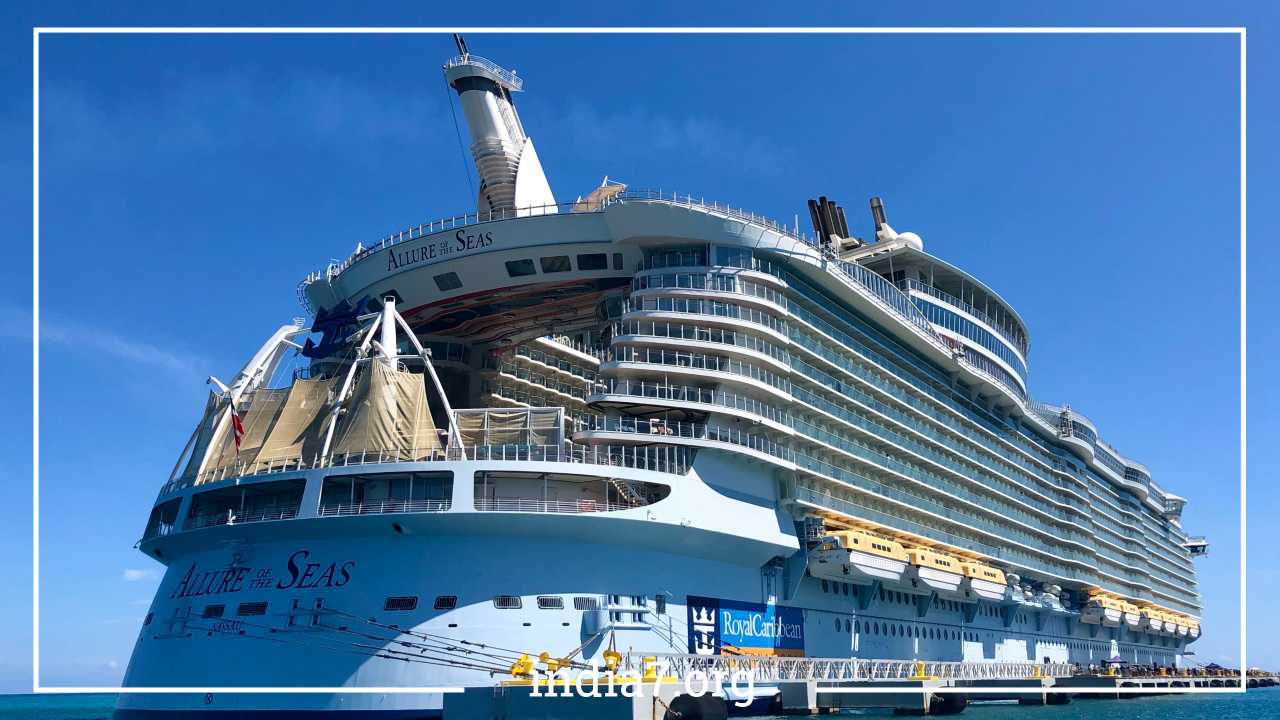Exploring Cruise Ship Travel Options: Choosing the Right Way to Reach Your Departure Port

Cruise Ship Travel
When it comes to planning a vacation aboard a cruise ship, many individuals focus their planning solely on their cruise. For many individuals, this can be a costly mistake. While the cruise itself is important, so is how you plan on making it to your vacation.
Unfortunately, a large number of individuals are unaware that they must make travel arrangements to their cruise ship’s departure location. When many individuals become aware of this fact, it is often too late for them to change their mind. You are encouraged not to be one of those individuals. When booking a cruise, it is important to keep a cruise ship’s departure location in mind. Doing so may prevent unnecessary travel expenses.
Selecting a cruise ship, with a close departure location, is advisable. Unfortunately, for many, this is impossible. A limited number of coastal locations serve as cruise ship departure ports. If you are unable to find a cruise ship departure location that is within a short distance to your home, you need to consider the cost of travel while booking your reservations. This cost is important because it may cause your vacation costs to exceed what you had previously expected.
In the event that you must make travel plans to reach your cruise ship departure location, you should consider all options. These options may include driving your own vehicle, renting a car, flying on an airplane, riding the bus, or taking the train. All of the aforementioned travel methods are doable, but the option you select will likely depend on convenience and the cost of travel.
There are a number of advantages and disadvantages to driving yourself to your cruise ship departure location. The greatest advantage of doing so is that your travel will be easy. Simply by hopping into your vehicle and hitting the road, you could be on your way. When driving your own vehicle, planning is often easier. The only downside to driving your own vehicle is the cost of gasoline. If you are required to drive a long distance, the cost could substantially add up.
If you are worried about the excessive miles on your own vehicle, you could rent one. Vehicle rentals are a popular way to reach your destination without an excessive amount of planning. Unfortunately, the cost of gasoline will also have an impact on driving. In addition to the cost of gasoline, the length of your cruise may also have an effect on the total cost of renting a vehicle. Vehicle rentals are charged by the day; therefore, if your car rental is left in a parking lot, you may be wasting money.
Flying is a popular travel method; however, it can be a costly one. Individuals trying to reach their cruise ship departure location are often encouraged not to arrive at their destination by airplane, unless absolutely necessary. This is due to the cost of flying. If your cruise ship departure port is only a few hours away, air travel may not be the best option. However, there are some cases where air travel may be the only option. If you are without your own vehicle, flying may be necessary to reach your cruise ship’s departure location.
Traveling to your cruise ship’s departure location by bus or train are other acceptable travel options. Each is likely to take some time, but they are both inexpensive ways to travel. Many individuals can easily afford a bus ticket or a train ticket. Aside from excessive stops, it is possible that you may not have access to either. Bus stations and train stations are only available in limited locations. You may find it difficult or impossible to find a station that offers service to the location of your choice.
Each of the above-mentioned travel methods all have their advantages and disadvantages. To find the perfect method of travel to reach your cruise ship’s departure location, you should weigh the advantages and disadvantages of each method. Once you have decided which method best fits your needs, you can rest assured knowing that you will make it on time for your cruise ship’s departure.
Now, let’s delve deeper into each of these travel options to provide you with a more comprehensive understanding of how they may impact your cruise vacation.
1. Driving to Your Cruise Ship Departure Location
Driving to your cruise ship departure location offers several advantages:
- Convenience: Driving your own vehicle provides flexibility in terms of timing and stops. You can set your own schedule and make detours along the way if you wish to explore other attractions or places.
- Cost Control: You have control over fuel costs and can choose the most cost-effective routes. If you’re traveling with a group, sharing the cost of gas can make this option more economical.
- Storage: You have ample storage space in your vehicle, making it easy to bring along all the luggage and items you desire.
However, there are also some downsides to consider:
- Distance: If your cruise departure port is far from your home, the long hours on the road may be tiring and time-consuming.
- Parking Costs: At the cruise terminal, you may need to pay for parking, which can add to your expenses.
- Wear and Tear: The wear and tear on your vehicle and the mileage added during the trip can impact its long-term condition and resale value.
- Traffic and Road Conditions: Depending on your route, you may encounter traffic congestion, road closures, or challenging driving conditions.
2. Renting a Vehicle
Renting a vehicle is an alternative to using your own car. Here are the pros and cons:
Advantages:
- Fresh Vehicle: You can rent a newer, well-maintained vehicle that may be more fuel-efficient than your own.
- No Wear and Tear: You won’t put additional mileage or wear on your personal vehicle.
- Flexibility: Like driving your own car, you have the flexibility to set your own schedule and make stops as needed.
Disadvantages:
- Rental Costs: Vehicle rental fees can add up, especially if you’re renting for an extended period.
- Fuel Costs: You’ll still need to pay for gasoline, and rental companies often require you to return the vehicle with a full tank.
- Parking Fees: At the cruise terminal or at your destination, parking fees for the rental vehicle may apply.
- Rental Policies: You must adhere to the rental company’s policies, which can include mileage limits and additional fees for extras like GPS or car seats.
- Returning the Vehicle: If you’re dropping off the rental car at a different location from where you picked it up, there may be additional fees.
3. Flying to Your Cruise Ship Departure Location
Flying is a faster but potentially more expensive option to reach your cruise ship. Here’s what you should know:
Advantages:
- Speed: Air travel allows you to reach your destination quickly, which is advantageous if your cruise departure port is far from your home.
- Long Distances: If your cruise ship departs from an international or distant location, flying may be the most practical choice.
Disadvantages:
- Cost: Airline tickets can be costly, especially during peak travel seasons. Be sure to compare the cost of flying with other transportation options.
- Airport Logistics: Dealing with airports, security, and baggage checks can be time-consuming and stressful.
- Ground Transportation: You’ll need to arrange ground transportation from the airport to the cruise terminal, which may add to your expenses.
- Luggage Restrictions: Airlines often have baggage weight and size restrictions, which could be limiting if you have a lot of luggage.
- Delays: Flight delays and cancellations can disrupt your travel plans and potentially cause you to miss your cruise departure.
4. Taking the Bus or Train
If you’re looking for budget-friendly travel options, buses and trains are worth considering:
Advantages:
- Affordability: Bus and train tickets are typically more affordable than flying or renting a car.
- Eco-Friendly: Public transportation is generally more environmentally friendly than private vehicles.
- Scenic Routes: Some train journeys offer picturesque views, adding to the travel experience.
- No Parking Hassles: You won’t need to worry about parking fees or finding a parking spot.
Disadvantages:
- Travel Time: Buses and trains often take longer to reach your destination compared to flying or driving.
- Limited Stations: Availability may be limited, and stations may not be conveniently located near your home or the cruise terminal.
- Baggage Handling: You’ll need to manage your luggage, which can be cumbersome if you have large or heavy bags.
- Schedules: Timetables for buses and trains may not align perfectly with your cruise departure time.
- Comfort: The comfort level on buses and trains can vary, and you may have limited amenities.
In conclusion, the choice of how to reach your cruise ship departure location depends on your priorities, budget, and personal preferences. Each travel option has its own set of advantages and disadvantages. To make an informed decision, consider factors such as the distance to the cruise port, your budget, the convenience of transportation, and your willingness to trade time for cost savings. Once you’ve weighed these factors, you can confidently select the travel method that best suits your needs, ensuring that you arrive on time and ready to embark on your cruise adventure.



